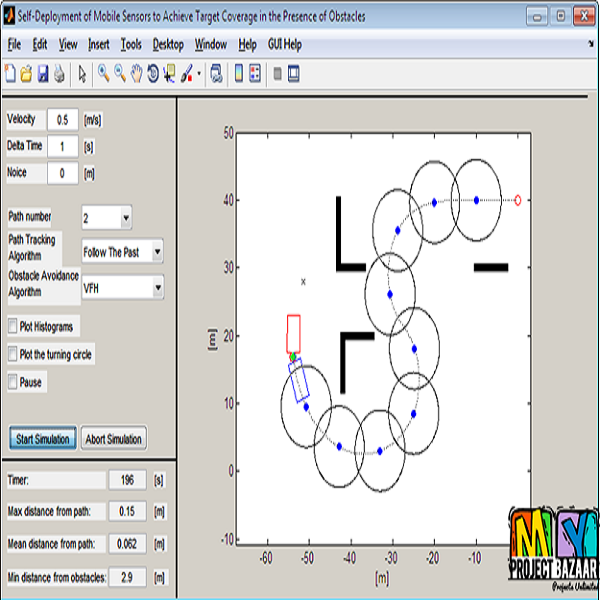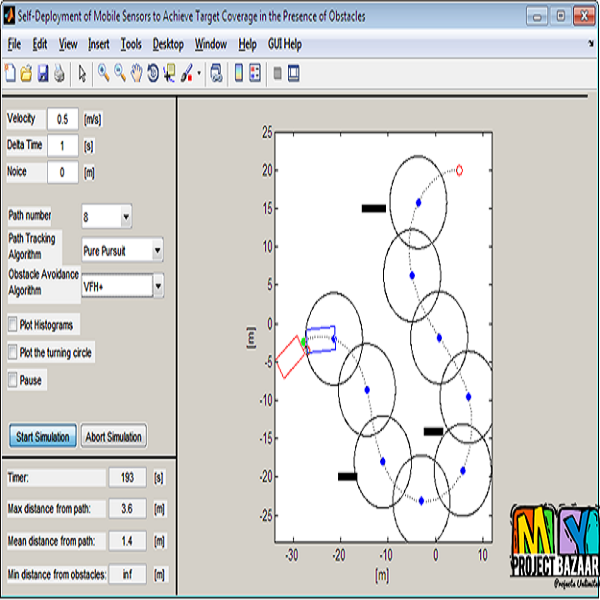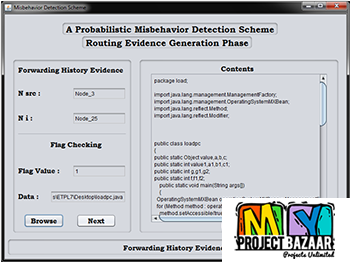
Self-Deployment of Mobile Sensors to Achieve Target Coverage in the Presence of Obstacles
Product Description
Self-Deployment of Mobile Sensors to Achieve Target Coverage in the Presence of Obstacles
Abstract— Target coverage is one of the major requirements in wireless sensor network applications, the purpose of which is to monitor a set of known targets in the region of interest. In this paper, we propose a localized self-deployment scheme, named as obstacle avoidance target involved deployment algorithm, for the deployment of randomly scattered mobile sensor nodes to cover predefined targets while maintaining connectivity with the base station in the presence of obstacles. We use the concept of potential field theory and relative neighborhood graph for the self-deployment of mobile sensor nodes in an unknown environment to achieve target coverage while preserving connectivity with the base station. Our proposed approach is localized in the sense that each decision taken by the sensor node is strictly based on information acquired from its neighboring sensors that are part of the relative neighborhood graph. The simulation results show the effectiveness of the proposed approach. To demonstrate the performance of our proposed scheme, we have implemented the proposed algorithm in MATLAB environment. This work mainly focuses on the target coverage while maintaining connectivity with the base station in the presence of obstacles. Since literature lacks similar concepts, it is not possible to provide comparisons with other works. < final year projects >
Including Packages
Our Specialization
Support Service
Statistical Report

satisfied customers
3,589
Freelance projects
983
sales on Site
11,021
developers
175+Additional Information
| Domains | |
|---|---|
| Programming Language |

















